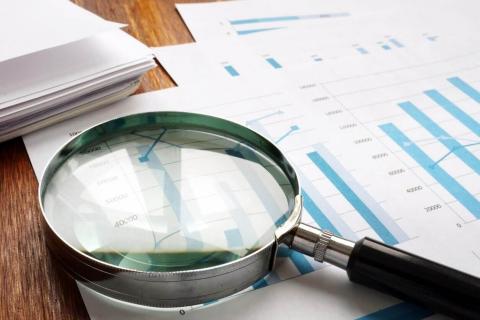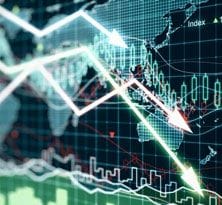What is leverage?
Leverage is the use of a smaller amount of capital to gain exposure to larger trading positions. A leverage of 10:1 means that in order to open and maintain a position, the necessary margin required is one tenth less than the transaction size. So if a trader had an account value of £10,000, using leverage, they could enter a trade for £100,000.
The margin amount refers to the percentage of the overall cost of the trade that is required to open the position. So if a trader wanted to make a £10,000 trade on a financial asset that had a leverage of 10:1, the margin requirement would be £1,000.
Leverage is used when a trader is spread betting (UK only) or trading contracts for difference (CFDs). You can spread bet or trade CFDs across a variety of financial assets, including forex, indices, commodities and stocks. Of course, some markets are more volatile than others. This means that leverage may be limited to smaller multiples of capital. In forex leveraged trading for example, retail leverage rates can start at around 30:1, compared to around 5:1 for shares.
Leverage can sound like a very appealing aspect of trading, as winnings can be immensely multiplied. But leverage is a double-edged sword – it is important to remember that losses can also be multiplied just as easily.
How to trade leverage
Understanding margin and leverage and the difference between the two can sometimes cause confusion. It’s important to realise that margin is the amount of capital that is required to open a trade. Leverage is the ratio applied to the margin amount to establish how big a trade is going to be placed.
Leveraged trading may be more likely to be adopted by those trading short-term price movements and perhaps less favourable to anyone investing long-term, for example over multiple years or even decades. In this instance, a ‘buy and hold’ approach could be more suitable if they are looking to track a stock's long-term performance.
It’s important for all traders to bear in mind the risks involved in leveraged trading. Many traders see their margin wiped out incredibly quickly because of a leverage that is too high.
Novice traders should be especially careful when trading on margin and perhaps use a lower leverage in order to minimise losses as much as possible. Lower leverage means traders are less likely to wipe out all of their capital if they make mistakes.
Some traders start with a leverage that is lower than their maximum leverage allowance. This enables traders to keep their positions open for the full size, even if they are experiencing negative returns. For example, let’s say a trader has a maximum leverage of 10:1 and opens a position with that leverage on a $10,000 account.
The trader now has a position size with an asset value of $100,000. This means a price movement of 1% will wipe out the position completely. Also consider that if the position is losing $5,000, the broker may reduce the trader’s position. This is because the trader now only has $5,000 of available capital, and 10:1 leverage means his maximum position allowed should be $50,000 not $100,000.
Reducing the leverage, let’s say to 5:1 with an initial outlay of $10,000, will mean that the position is now $50,000 and a 1% move will be equal to $500. Keeping leverage rates low means if the trader does lose money, it is less likely to wipe out all or a substantial amount of their capital.

Calculating leverage ratios
An important aspect in using leverage is understanding how to calculate the ratio. The formula for leverage is:
L = A / E
where L is leverage, E is the margin amount (equity) and A is the asset amount.
So, dividing the asset amount by the margin amount gives the ratio of leverage.
It is also possible to start with the margin amount and apply a leverage ratio to determine the position size. In this instance the formula would be A = E.L. Therefore, multiplying the margin amount by the leverage ratio will give the asset size of a trader’s position.
Most traders distribute risks across different markets, meaning they are not putting all their eggs in one basket. This could be done by taking various positions in different markets. When this is the case, there may be the need to do calculations to determine things like net asset value, or the accumulative value of a trader’s positions. Thanks to platform technology that most brokers will offer, it is easier to monitor all parameters and open or close individual positions as needed. More importantly, it can help a trader work out if positions fit within their total leverage amounts, which should be less than the maximum leverage allowed by the broker.
Risk and leverage trading
The most important thing to understand when talking about leverage is the risk involved. Risk is inherent to any type of trading, however, leverage can cause both magnified profits and losses. It would be prudent for traders to pay particular attention to choosing how much leverage they will use. The leverage ratio should be determined in advance of trading. It is very tempting to trade in a larger size than what was originally determined if you have a streak of winning trades.
Doubling your risk on a one-off basis could benefit a trader if they happen to get that one-off trade right. But get it wrong and a trader could end up facing a much larger loss than usual. To help reduce risks in trading, you should plan out your trading strategy in advance.
Two factors could be taken into consideration when determining what amount of leverage to apply to a portfolio: how much risk to take per trade and how much risk to take per day. Examining this via percentages may make things easier. A trader can determine how much risk they are willing to take per day in terms of capital loss, which involves deciding the maximum amount one is willing to lose in one day of trading.
A trader should also determine how many trades they want to place per day. This could be a set number or a maximum number. For example, a trader may decide that whatever the market, they will make three trades a day. Or they will make a maximum of three trades in a day. In each case, the trader can divide the percentage they are willing to risk per day by this number.
CMC Markets is an execution-only service provider. The material (whether or not it states any opinions) is for general information purposes only, and does not take into account your personal circumstances or objectives. Nothing in this material is (or should be considered to be) financial, investment or other advice on which reliance should be placed. No opinion given in the material constitutes a recommendation by CMC Markets or the author that any particular investment, security, transaction or investment strategy is suitable for any specific person.
CMC Markets does not endorse or offer opinion on the trading strategies used by the author. Their trading strategies do not guarantee any return and CMC Markets shall not be held responsible for any loss that you may incur, either directly or indirectly, arising from any investment based on any information contained herein.

Experience our powerful online platform with pattern recognition scanner, price alerts and module linking.
- Fill in our short form and start trading
- Explore our intuitive trading platform
- Trade the markets risk-free